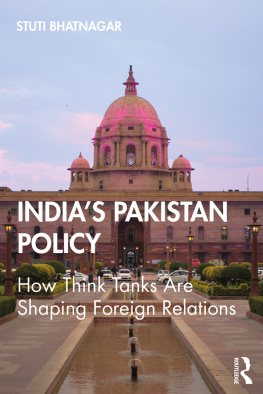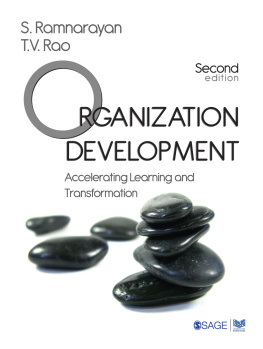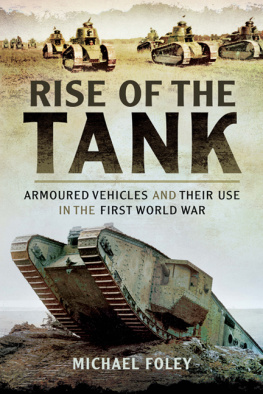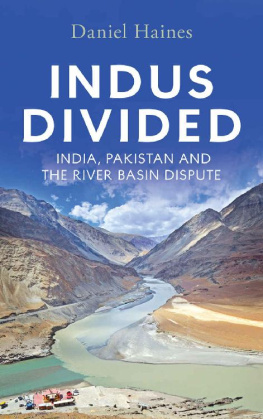Local Organizations for Social Development
Concepts and Cases of Irrigation Organization
Local Organizations for Social Development
Concepts and Cases of Irrigation Organization
DavidM.Freeman
withVrindaBhandarkar,EdwinShinn,
JohnWilkins-Wells, andPatriciaWilkins-Wells

First published 1989 by Westview Press, Inc.
Published 2021 by Routledge
605 Third Avenue, New York, NY 10017
2 Park Square, Milton Park, Abingdon, Oxon OX14 4RN
Routledge is an imprint of the Taylor & Francis Group, an informa business
Copyright 1989 by Taylor & Francis
All rights reserved. No part of this book may be reprinted or reproduced or utilised in any form or by any electronic, mechanical, or other means, now known or hereafter invented, including photocopying and recording, or in any information storage or retrieval system, without permission in writing from the publishers.
Notice:
Product or corporate names may be trademarks or registered trademarks, and are used only for identification and explanation without intent to infringe.
Library of Congress Cataloging-in-Publication Data
Freeman, David M.
Local organizations for social development.
(Westview special studies in social, political, and
economic development)
Bibliography: p.
Includes index.
1. IrrigationAsiaSocieties, etc.Case studies.
I. Bhandarkar, Vrinda. II. Title. III. Series.
HD1741.A78F74 1989 333.91'3'0605 89-14731
ISBN 13: 978-0-3670-1333-2 (hbk)
ISBN 13: 978-0-3671-6320-4 (pbk)
DOI: 10.4324/9780429043192
To the farmers and irrigation managers
who made this book possible
CONTENTS
1 Introduction
2 Organizing for Water Control
3 Components of Organizational Design for Water Control in the Interface Between Main and Farm Systems
4 Assembling the Components of Middle-Level Organizations
Part Two: Cases
5 Irrigation Organization on the Niazbeg Distributary in Punjab, Pakistan
David M. Freeman and Edwin Shinn
6 Organization of a Small Reservoir System in Madhya Pradesh, India
David M. Freeman and Vrinda Bhandarkar
7 Two Reservoir Systems in Sri Lanka
David M. Freeman, John Wilkins-Wells, and Patricia Wilkins-Wells
Part Three: Conclusion
8 Discussion and Implications
- 1 Introduction
- 2 Organizing for Water Control
- 3 Components of Organizational Design for Water Control in the Interface Between Main and Farm Systems
- 4 Assembling the Components of Middle-Level Organizations
- Part Two: Cases
- 5 Irrigation Organization on the Niazbeg Distributary in Punjab, Pakistan
- 6 Organization of a Small Reservoir System in Madhya Pradesh, India
- 7 Two Reservoir Systems in Sri Lanka
- Part Three: Conclusion
- 8 Discussion and Implications
Guide
PREFACE
Much of the work reported here was accomplished as part of the Water Management Synthesis II (WMS II) Project at Colorado State University by the United States Agency for International Development under contract DAN-4127-C-002086-00. All reported opinions and conclusions are those of the author and not those of the funding agency or the United States Government.
The Water Management Synthesis II (WMS II) Project included as part of its mandate the establishment of a program of special studies. The purpose of this program was to increase the capacity of participant universities to serve USAID irrigation program objectives in technical assistance, training, and technology transfer globally and in specific Asian countries. During the course of deliberations with representatives of Cornell University, Utah State University, USAID/Washington, and USAID missions, Colorado State University (CSU) developed a program of special studies focusing on the following theme: interfacing farm water management with main system management through development of local command area irrigator organizations. This book presents the information, data, and analysis that developed as that theme was pursued. The larger body of work, from which this book has been drawn, was reported in Linking Main and Farm Irrigation Systems in Order to Control Water, WMS Report 69, Water Management Synthesis Project, Colorado State University, Fort Collins. This report series includes:
Volume 1: Designing local organizations for reconciling water supply and demand (D.M. Freeman).
Volume 2: A case study of the Niazbeg distributary in Punjab, Pakistan (Edwin Shinn and David M. Freeman).
Volume 3: A tank system in Madhya Pradesh, India (Vrinda Bhandarkar and David M. Freeman).
Volume 4: The case of Lam Chamuak, Thailand (Kanda Paranakian, W. Robert Laitos, and David M. Freeman)
Volume 5: Two tank systems in Polonnaruwa District, Sri Lanka (John Wilkens-Wells, Pat Wilkens-Wells, David M, Freeman).
David M. Freeman
ACKNOWLEDGMENTS
The research and analysis reported here benefited from the support, cooperation, and goodwill of many. Worth Fitzgerald and Douglas Merrey, while serving in USAID's Technical Assistance Bureau, and Mark Svendsen, South Asian Programs Office, rendered valuable support in securing the financial means to launch the special studies research effort at Colorado State University from which this work has been drawn.
Wayne Clyma and Dan Lattimore, respectively director and associate director of the Water Management Synthesis II Project at Colorado State University, provided administrative support deserving of the warmest thanks. Data reported in this study were gathered as part of that interdisciplinary effort.
For their work in the Pakistan research, including administrative support and guidance, we thank Mohammad Salim Arshad, Director of the Punjab Command Water Management Project; Maqbool Elahi, economist for the Command Water Management Project in the Punjab; Jamshed Tirmizi, who assisted with the sociological field effort; and Ashraf Ali, from the 6-R subproject area, who provided much appreciated leadership for the data collection team. Other members of the Command Water Management team who rendered assistance were James Warner (CSU, groundwater hydrology), Mohammad Haider (CSU, economics), and Eugene Quenemoen (Montana State University, agricultural economics).
Thanks are also in order for the effort of Nisar Khan from the Shahkot subproject area. Ghulam Rasool, from the Pakpattan subproject area, contributed much to the fieldwork, as did Muhammad Nawaz from the Niazbeg subproject area. Mushtaq Gill, Director of the Lahore On-Farm Water Management Training Institute, provided much organizational support for the field research. Thanks are also extended to Mohammad Shafique, agricultural engineer, who served as leader of the WMSII/CSU assistance team.
The Indian case study benefited from the help of Max K. Lowdermilk, serving in the US AID Mission to India. His assistance was appreciated in preparing local arrangements in Madhya Pradesh between the federal and state governments and at the research site. For aid in securing contacts at the research site, we thank K.N. Venkatraman.









![Keith Bain - Frommers India [2010]](/uploads/posts/book/43617/thumbs/keith-bain-frommer-s-india-2010.jpg)

